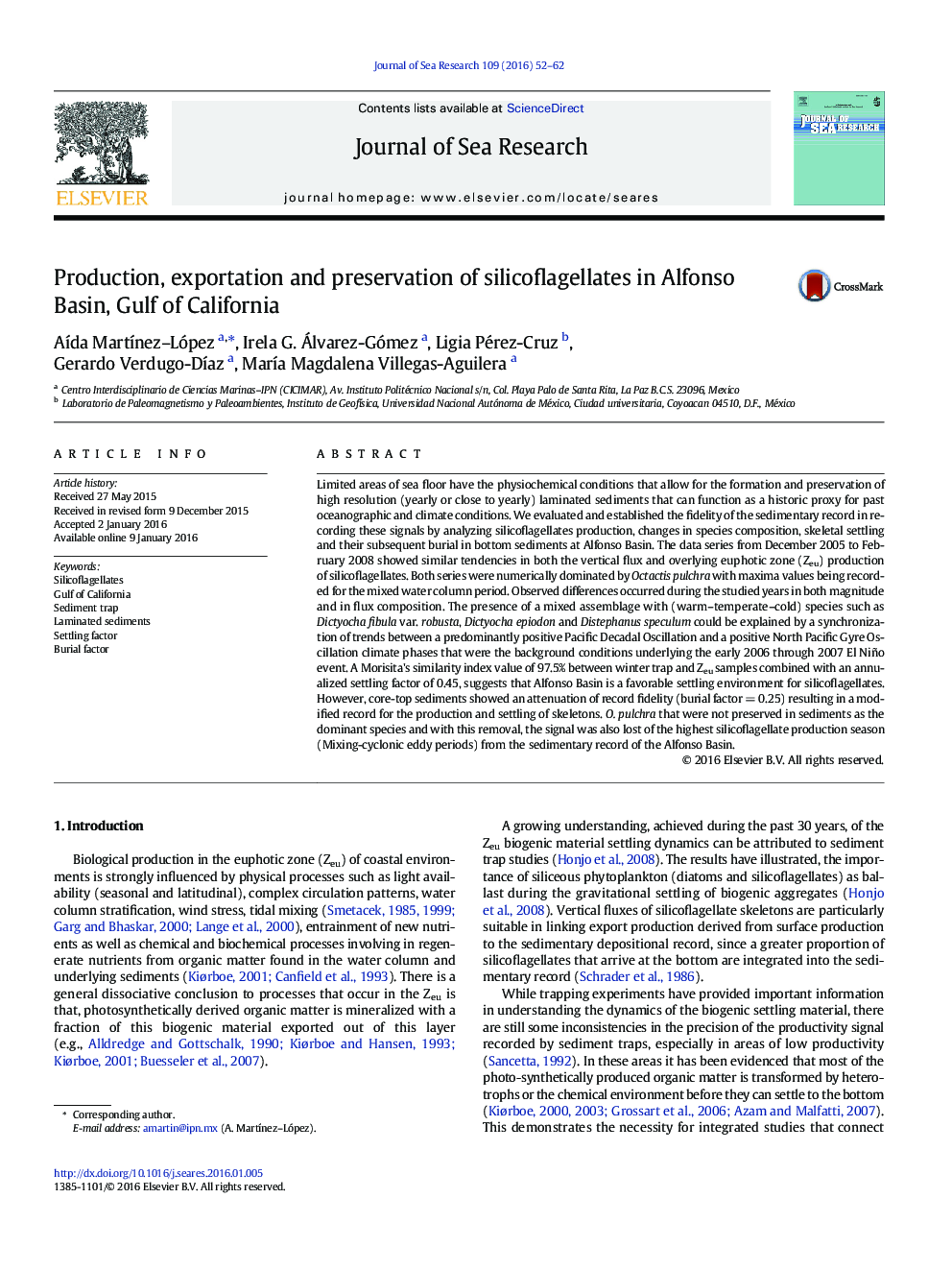| کد مقاله | کد نشریه | سال انتشار | مقاله انگلیسی | نسخه تمام متن |
|---|---|---|---|---|
| 4549567 | 1627466 | 2016 | 11 صفحه PDF | دانلود رایگان |
• Vertical flux and overlying production were numerically dominated by Octactis pulchra.
• 2-year differences were observed in silicoflagellates linked to climate variability.
• Core-top sediments has a modified record (burial factor = 0.25) of silicoflagellates.
• Selective dissolution occurs in sediments and O. pulchra were not preserved as the dominant species.
• Signal of highest silicoflagellate production season vanished in the sedimentary record.
Limited areas of sea floor have the physiochemical conditions that allow for the formation and preservation of high resolution (yearly or close to yearly) laminated sediments that can function as a historic proxy for past oceanographic and climate conditions. We evaluated and established the fidelity of the sedimentary record in recording these signals by analyzing silicoflagellates production, changes in species composition, skeletal settling and their subsequent burial in bottom sediments at Alfonso Basin. The data series from December 2005 to February 2008 showed similar tendencies in both the vertical flux and overlying euphotic zone (Zeu) production of silicoflagellates. Both series were numerically dominated by Octactis pulchra with maxima values being recorded for the mixed water column period. Observed differences occurred during the studied years in both magnitude and in flux composition. The presence of a mixed assemblage with (warm–temperate–cold) species such as Dictyocha fibula var. robusta, Dictyocha epiodon and Distephanus speculum could be explained by a synchronization of trends between a predominantly positive Pacific Decadal Oscillation and a positive North Pacific Gyre Oscillation climate phases that were the background conditions underlying the early 2006 through 2007 El Niño event. A Morisita's similarity index value of 97.5% between winter trap and Zeu samples combined with an annualized settling factor of 0.45, suggests that Alfonso Basin is a favorable settling environment for silicoflagellates. However, core-top sediments showed an attenuation of record fidelity (burial factor = 0.25) resulting in a modified record for the production and settling of skeletons. O. pulchra that were not preserved in sediments as the dominant species and with this removal, the signal was also lost of the highest silicoflagellate production season (Mixing-cyclonic eddy periods) from the sedimentary record of the Alfonso Basin.
Journal: Journal of Sea Research - Volume 109, March 2016, Pages 52–62
